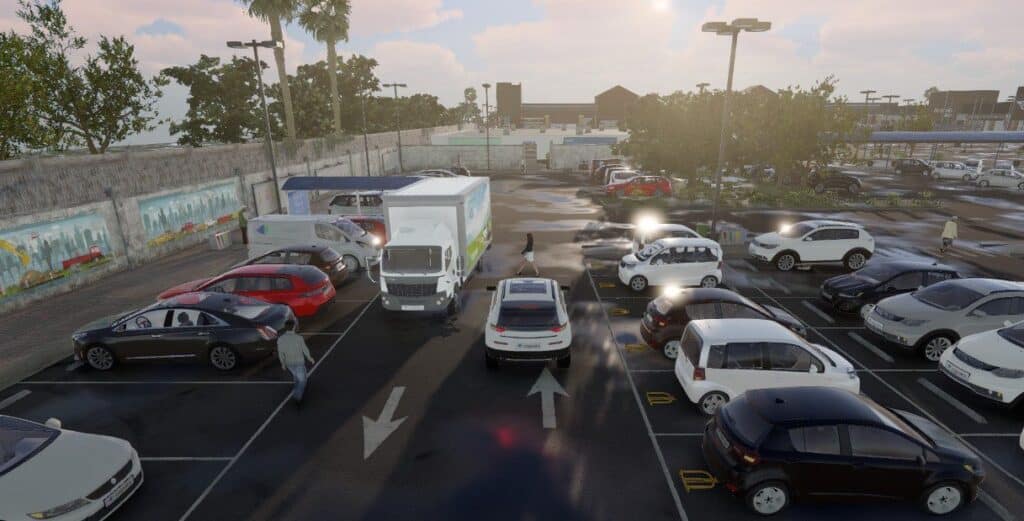Saving lives on the road: The potential of Autonomous vehicles and digital twins | Smart Cities, part II
March 2022
Author: Chen Gabay
Traffic accidents are responsible for about 1.3 million deaths around the world
each year. This huge number pushes governments and cities to look for ways to
improve road safety. It is now becoming a race of technology: Autonomous
Vehicles with the help of Urban digital twins are aiming to create safer driving
and smarter traffic management. Cognata’s 4D model, with its AI mobility layers,
combines those technologies and offers an innovative way to help smart cities
and save lives.
Traffic accidents are harmful and expensive, making governments
and cities desperately search for effective solutions.
The human and economic tolls of traffic accidents are enormous. They are the
leading cause of death for children and young adults; they cost most countries
up to 3% of their GDP (gross domestic product), and most of the road fatalities
are among vulnerable road users: pedestrians, cyclists, and motorcyclists
(according to the World Health Organization). Those statistics are even more
tragic since most safety issues are caused by human errors and therefore
preventable. Among the top reasons for accidents are speeding, drink-driving,
and distracted driving. Other causes are also environmental, line of sight, road
condition, and weather.
Governments and cities are trying to solve this issue by any means possible:
improving infrastructures, education, and even by increasing law enforcement.
For example, studies show that for every 1% increase in speed there is a
4% increase in fatal crashes. And so, cities are enforcing speed limits and adding
roundabouts, speed humps, and chicanes to limit vehicles’ speed. Roundabouts
can help reduce traffic speeds at intersections. Speed humps can help control
vehicle speeds near residential areas and schools, and narrower streets can
encourage more careful driving. Are those solutions enough? Evidently, the answer
is no. and so, new technologies are evolving in order to change the equation.
New technologies for safer roads: Dynamic 4D models help train
Autonomous Vehicles, but can they also be useful for urban planning?
Innovative technologies are already offering various solutions for safer roads: The
internet of things (IoT), AI, autonomous driving systems, urban digital twins, and
big data analytics are evolving, creating highly connected networks that collect and
share data across the city in order to monitor and manage road safety. Autonomous
vehicles, for example, might solve many of the reasons causing human driving to
collide. The vehicle’s AI can drive at a more constant speed and connect to other
vehicles on the road in order to drive in a safer and more aware way. They also include
various sensors that “see” the environment in a smarter way such as Lidar and Thermal
cameras and therefore will be less affected by low vision conditions.
It’s clear that Autonomous Vehicles need to be trained and tested for regular and
extreme safety events in order to be certificated to drive our roads. According to recent
studies, Autonomous Vehicles would have to drive about 8.8 billion miles in order to
drive safer than a human driver. However, this number can be lowered dramatically
by using virtual testing and simulations, such as Cognata’s 4D model with the AI
mobility layers. With this solution, we can create artificial safety scenarios in cities
and highways digital twins, test the AV reactions to different road conditions and
weathers, other vehicles on the road, motorcycles, cyclists, and pedestrians.
This technology is great for testing, improving, and even regulating AV technology,
but it can also be a great way for cities and urban planners to examine the integration
of this technology in their environments. Junctions, interchanges, intersections, and
residential areas can be analyzed through different road user’s lines of sight (drivers,
adult pedestrians, and children), conduct accidents inquiries and reconstructions,
test the AV behavior in their future planning and examine different planning alternatives.
Harnessing innovative technologies: Autonomous Vehicles and digital
twins offer new solutions for governments and cities.
The new technologies of Autonomous Vehicles and the Digital Twin offer cities the
opportunity to increase road safety and improve their transportation infrastructures
planning and management. Using a dynamic mobility layout of Autonomous Vehicles
can help cities and planners understand and analyze how this new technology will
affect the future of road safety and the urban environment for all road users, as well
as examine different safety scenarios and solutions. The outcome could help understand
and plan safer cities and highways, decrease traffic accidents and hopefully, save many lives.
